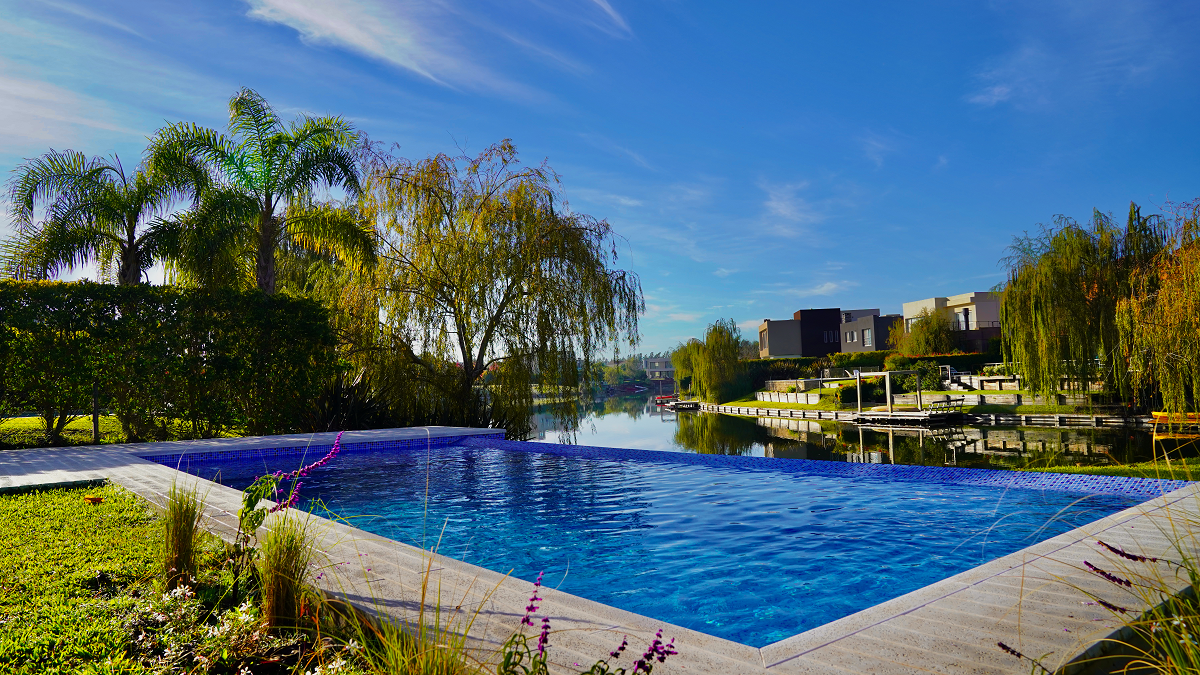Cleaning the pool before summer arrives is crucial for several reasons, both to maintain the health of children and to extend the life of the installation. During the winter, your pool can accumulate debris such as leaves, dust, and other debris, creating an ideal environment for the growth of algae, fungi, and bacteria. If proper cleaning is not done, the water can turn green and cloudy, as well as being unhealthy for those who immerse it.
Keep the pool clean Helps balance water chemical levelssuch as pH and chlorine. These must be in the appropriate ranges to avoid irritation to the skin and eyes, as well as to prevent infections.
Additionally, a clean and well-maintained pool looks much better, which improve the aesthetics of your garden or outer space. Dirt and stain buildup on walls or backgrounds can be difficult to remove if not treated in time.
pool 2.jpg
How to properly clean the pool
Properly cleaning a pool requires several steps to ensure that the water is in optimal conditions for use and that the structure remains in good condition.
1. Remove leaves and floating debris
Use a hand net or leaf scoop to remove any floating debris, such as leaves, branches, insects, or any objects that have fallen into the pool. This initial step is important to prevent these elements from reaching the filter system.
2. Brush the walls and background
Use a pool brush to scrub the walls and bottom. This helps remove algae, stuck-on dirt and lime deposits that may have built up. Depending on the material of the pool (tile, liner, concrete), choose the appropriate type of brush so as not to damage the surface.
3. Vacuum the bottom of the pool
After brushing, the debris will fall to the bottom, so it is essential to use a pool vacuum to remove it. Manual or automatic vacuum cleaners (cleaning robots) are effective in leaving the bottom clean. Make sure you do it slowly to avoid stirring up debris.
4. Clean the filter
The filtration system is key to keeping water clean. There are several types of filters (sand, cartridge or diatom). It is important to clean or change filters regularly:
- Sand filters: Should be cleaned using a “backwash” process to remove impurities.
- Cartridge filters: Remove the cartridge and rinse it with pressurized water. If it is very dirty, you can soak it in a specific cleaning solution.
- Diatom filters: They also require backwashing or cleaning with specific products.
5. Check and adjust the water level
Make sure the water level is halfway up the skimmer, so the filtration system works properly. If the level is low, refill the pool; if it is high, remove the excess.
6. Balance chemicals
A correct chemical balance is essential to keep water safe and clean.
7. Chlorine shock (shock chlorination)
Perform a shock treatment at least once a month, or when you notice that the water is cloudy or after intensive use of the pool. This treatment consists of adding a high dose of chlorine to eliminate bacteria and microorganisms. It is important not to use the pool for several hours after this treatment.
8. Review of skimmers and prefilters
- Clean the skimmers and pump pre-filter regularly to ensure the filtration system does not become clogged.
9. Regular water maintenance
Even if you perform a deep cleaning, it is important to perform regular maintenance:
- Clean up residue daily or every few days.
- Check chemical levels at least once a week.
- Clean the filter every 1-2 weeks, depending on use and filter type.
Source: Ambito
David William is a talented author who has made a name for himself in the world of writing. He is a professional author who writes on a wide range of topics, from general interest to opinion news. David is currently working as a writer at 24 hours worlds where he brings his unique perspective and in-depth research to his articles, making them both informative and engaging.




